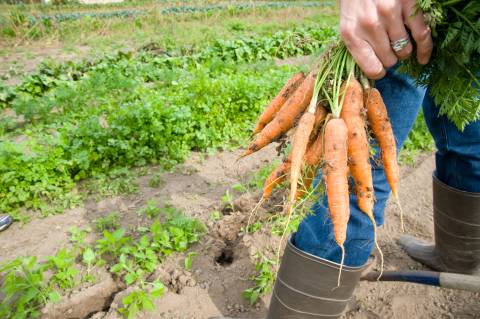
Together We Can End Hunger and Improve Health
Millions of Americans struggle with hunger. Millions more struggle with diet-related diseases—like heart disease and diabetes, some of the leading causes of death and disability in the United States. While the effects of hunger impact all Americans, that toll disproportionately impacts underserved communities, communities of color, low-income families and rural Americans.
Mobilizing a Movement
It’s been more than 50 years since the first and only White House Conference on Food, Nutrition, and Health. That pivotal event influenced the country’s food policy agenda for decades afterward.
Half a century later, the White House is holding a conference to catalyze the public and private sectors around a coordinated strategy to:
- accelerate progress and drive transformative change to end hunger in the United States, and
- improve nutrition and physical activity and close the disparities surrounding them.
The goal of these efforts is to end hunger and increase healthy eating and physical activity by 2030.
We Can All End Hunger
Achieving this goal will require collective action. Whether you are a government entity, business, foundation, academic institution, association or individual, you can play a role in this critical effort.
The CDC Foundation, an independent nonprofit organization, worked to identify cross-sector partners interested in making transformative commitments to align their efforts with one or more of the five pillars outlined by the White House. At this time, additional commitments are not being considered.
Please make a donation today to help end hunger and improve health.
Pillars for Collective Action
The five pillars to end hunger and increase healthy eating and physical activity include:
Improving Food Access and Affordability
- Ensure kids have access to nutritious meals in the summer
- Reduce barriers to participation and involve community members in the design and implementation of federal assistance programs
Integrate Nutrition and Health
- Invest in health-related social needs, including increasing food security screenings and expanding nutrition services
- Strengthen health professionals’ education in nutrition and physical activity
Empower All Consumers to Make and Have Access to Healthy Choices
- Invest in health-related social needs, including increasing food security screenings and expanding nutrition services
- Strengthen health professionals’ education in nutrition and physical activity
Support Physical Activity for All
- Offer more opportunities to be physically active in communities
- Support comprehensive physical activity programs in schools
Enhance Nutrition and Food Security Research
- Fill nutrition research gaps to continue to support development of the Dietary Guidelines for Americans
- Build the evidence-base and translate it into action for improved access to federal assistance programs
Thank You for Engaging with Us
The CDC Foundation wishes to thank the hundreds of organizations that connected with our team. Learn more about these organizations who are engaging to end hunger and improve nutrition and physical activity in the United States by 2030.
.
Resources and Other Information


